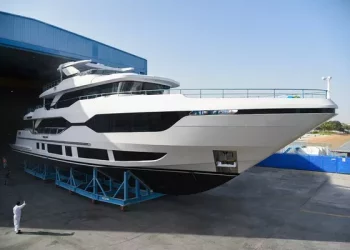General knowledge of the physics of flying, if you want to learn to fly must know the following knowledge.
Flight is due to several forces acting on the plane.
The first is the weight of the plane, the force of gravity that pulls the plane toward the ground.
The second is the thrust produced by the engine, which pushes the plane through the air. The forward motion of the plane causes the air to move over the wings, which in turn creates lift that counteracts gravity.
The last thing acting on an airplane is drag, which is the force in the opposite direction of flight.
Multiple forces can act on the same aircraft from different directions at the same time. A single force is called a component force, and the total effect of multiple forces is called the net force or the net force.
Thrust generation is the basic purpose of aircraft engines.
This force enables the aircraft to overcome inertia (the property that prevents an object from changing its tendency to move).
Thrust moves the plane forward, which then causes the wings to generate lift.
The thrust/weight ratio of an aircraft is a common aircraft metric, which is the ratio of the maximum thrust of the aircraft to the total weight of the aircraft.
A thrust/weight ratio greater than 1 means the aircraft can overcome gravity.
A thrust/weight ratio greater than 1:1 indicates that the aircraft can overcome Earth’s gravity, and the F-15E twin turbojets (PW-200 engines) flying straight up can each produce 23,450 pounds of thrust.
The thrust produced by the engines drives the plane forward, causing air to move over the top and bottom surfaces of the wings, creating pressure that pushes them up.
Thrust can also change the speed of an aircraft.
An airplane rises when its wings move through the air and split the air in half.
Half of the air passes over the top of the wing, and the other half passes under it.
Air flowing near the wing is split in two at the point of impact (see image below) and flows over the upper and lower outer surfaces of the wing separately.
The upper surface of the wing is more curved, so the upper surface of the wing is longer than the lower surface (see figure), and the surface area of air flowing over the upper surface of the wing is greater than the surface area flowing over the lower surface.
The air that passes over the top of the wing has a longer travel, so it travels faster than the air that passes under it.
Faster airflow on the surface of the wing exerts less pressure on the upper wing than on the lower surface of the wing. This creates a pressure difference, an imbalance between the upper and lower surfaces of the wing, which pushes the wing upward and causes the plane to rise.
Angle of attack The amount of lift produced by a wing varies with the Angle at which the wing hits the air. This Angle is called the Angle of attack (AoA). This Angle of attack is not to be confused with the azimuth of space or the inclination of the nose to the horizontal.
The F-15’s Angle of attack is measured in units, while the azimuth is measured in degrees.
The Angle of attack is not fixed, but varies with the specific situation.
Sometimes KEEPING THE Angle of ATTACK up to 14 UNITS gives the aircraft the maximum cruising range. When turning, the main focus is energy saving. 16-22 units are optimal.
It is best to choose 8-10 units of Angle of attack when accelerating.
If the Angle of attack is too high, an audio voice in the cockpit will sound, warning you that a stall is imminent.
Check THE Angle OF ATTACK BY LOOKING AT THE SYMBOLS AND NUMBERS ON THE LEFT SIDE OF THE HEAD-UP DISPLAY DIRECTLY BELOW THE INDICATED AIRSPEED. It IS THE Angle OF attack OF the aircraft in units.
“Symbols in the Main head-up display”.
Drag Drag is the force that stops an airplane from moving in the direction of flight.
Any body moving in a fluid (air is also a fluid) will have friction.
Drag occurs when the plane is moving forward, when air rubs against the wings, and when pressure builds up as air pushes toward the plane’s surface.
The resulting drag force is the backward component of lift.
The more lift a wing produces, the more drag it causes.
Acoustic drag also occurs when the plane reaches Mach 1.
The front of the wing creates more pressure than the rear, which creates backward drag.
Parasitic drag includes wind and all kinds of drag caused by non-lift forces.
The overall flight characteristics of an aircraft are determined by the combination of lift and drag coefficients, regardless of the resistance encountered.
Different angles of attack produce different lift and drag forces.
Every aircraft has an ideal combination of Angle of attack, thrust, and drag, and at different speeds, it produces different kinds of drag.












































